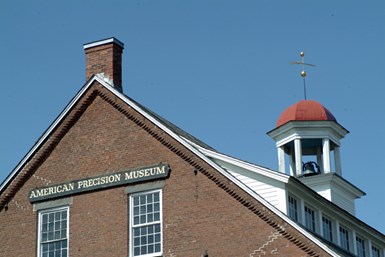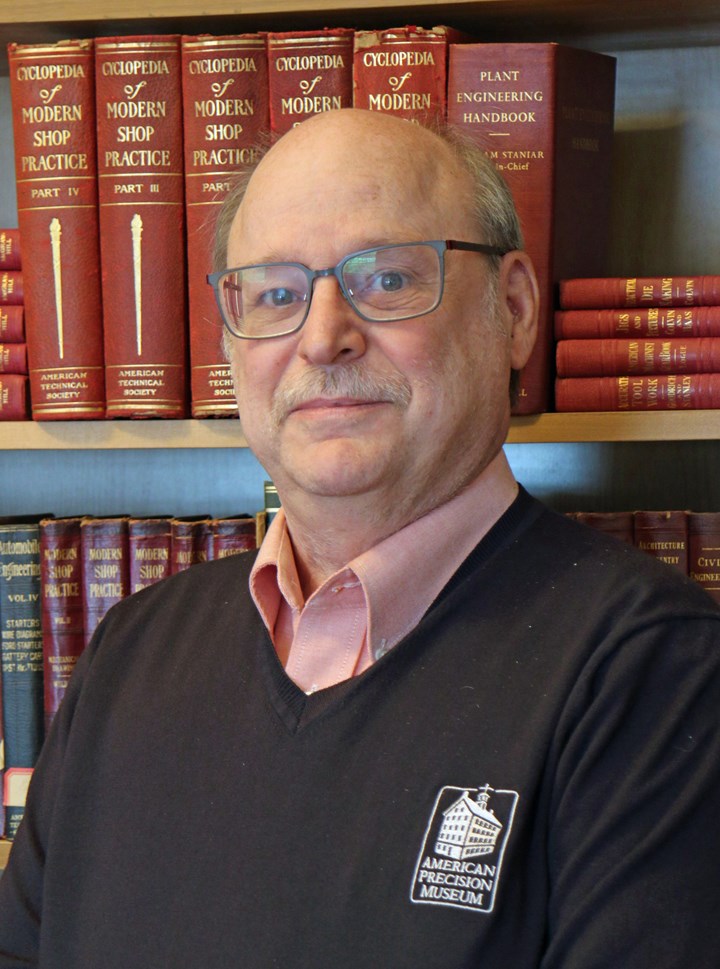Transitioning to "Made by Machine"
The American Precision Museum is the historical birthplace of the U.S. manufacturing industry. New displays there will tell the story of the transition from “made by hand” to “made by machine.”
#columns

Try for a moment to imagine yourself in the mid-1800s. Products at the time were mostly made by hand with components that were filed to fit. The production of rifles drew the attention of the British and U.S. governments. Repair of rifles was not only costly but, without part interchangeability, could take several months or longer to accomplish.
Three entrepreneurs — Nicanor Kendall, Samuel Robbins and Richard Lawrence — saw the problem of interchangeable parts as an opportunity to create a new method of manufacturing using machines rather than hand-fabricated parts.
Featured Content
The brilliance of the work at Kendall, Robbins & Lawrence achieved international fame at the Crystal Palace Exhibition in London in 1851. The firm exhibited six rifles which they dismantled and reassembled, selecting the parts at random. The Brits coined the term “American System,” based on the extensive use of interchangeable parts and mechanization of production, which resulted in increasing specialization and efficient use of labor. This led to British contracts for machine tools and rifles, establishing Robbins & Lawrence as one of the first American companies to export new technology from America to Europe, and as the first large-scale exporter of machine tools.
The American Precision Museum (APM) occupies a National Historic Landmark in Windsor, Vermont. APM is the only museum dedicated to the story of American ingenuity in manufacturing. From its very beginnings, manufacturing innovation has propelled business, answering the demand for goods, products and services. The ideas and concepts conceived by entrepreneurs such as Kendall, Robbins & Lawrence forged a future for an industry that continues to evolve, create and adapt to change our world.
The APM tells this story of change. It is the place where the origins of early technology blend with today’s digital world through exhibits, programs and mission.
The APM is the only museum dedicated to the story of American ingenuity in manufacturing.
The museum’s story is your story — a tale of courage and ideas that is continually in flux, improving techniques and technologies, and pushing industry forward. This is a story of the American spirit striving for greatness.
In the museum today, displays of early machinery are integrated into the broad story of American industrial history, enabling visitors to learn more of the important role the manufacturing industry continues to play in shaping American culture and society.
Today, the museum is well prepared for future growth as it showcases the dynamic story of the machines and people which form the foundation and future of the manufacturing industry in America. The APM foundation includes an experiencedstaff and board from many corners of our industry, a distinctive brand, a reinvigorated mission and a sound educational philosophy that has proven worthy of support.
With a projected need to fill 3.5 million manufacturing jobs in the next decade, the APM is primed to help reignite interest in manufacturing careers with our youth.
Making the connection to U.S. manufacturing has long been an aspiration of the museum. In 2016, the board adopted a forward-looking transformation plan. The goal is to leverage the APM’s national regard as “the machine tool museum” to advocate for the sustained resuscitation of U.S. manufacturing.
On a more practical level, we use our collection as backdrop for programs educating youth to the joy of making things. We are engaged with partners co-branding lesson packs for STEM educators. By creating favorable manufacturing career awareness, we seek to be a prequel to workforce development programs.
Already much has been accomplished since the adoption of the transformation plan. Visitors to the museum as well to our website are introduced to the progression of technology with engaging displays and videos. STEM learning activities designed to engage youth in history, STEM activity and career awareness are offered through a combination of online learning and hands-on activities.
The museum has been working with industry leaders to utilize their platforms to expand the APM’s reach throughout America. Our messaging is being transformed to be compatible with the Internet and social media platforms and other new virtual technologies.
The first upgrade is underway, and it concerns reconfiguring our opening exhibit to reflect the transition of “Made by Hand” to “Made by Machine.” Beginning May 1, 2021, visitors to the museum will be able to interact with a series of displays that tells this important story. For those who cannot make it to the museum, a virtual tour of the displays will be offered on our website (americanprecision.org).
The APM is the historical birthplace of our industry, the American System and the Precision Valley. There is no better place to link our history to the present and inspire the next generation to join our ranks.
About the Author
Steve Dalessio
Steve Dalessio is the executive director of the American Precision Museum.
RELATED CONTENT
-
Manufacturing Knowledge is Power
The Knowledge Centers with video produced by brands such as Production Machining on the IMTS spark online platform take deep dives into technology and trends related to various CNC machining and manufacturing topics.
-
Get to Know Cleanliness Standards
With a small amount of practice, it is possible to understand the underlying motivation of a cleaning standard and to figure out the specific aspects of the specification that are applicable to the customer.
-
Use Social Media to Attract Young Manufacturing Talent
Nicole Wolter, president of HM Manufacturing and a millennial, suggests tips for creating a social media feed that attracts young people to manufacturing.






